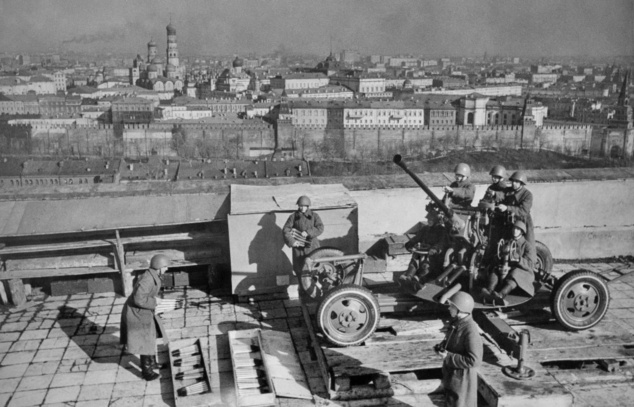The war years were a difficult period for the power station. GES-2’s smokestacks were taken down brick by brick in 1941 to prevent their being used for navigation during German airstrikes. Much of the station’s equipment was dismantled and—as happened with many factories in Moscow—evacuated out of reach of German bombers beyond the Urals. The remaining boilers constantly malfunctioned and, due to fuel shortages, they had to be fired with coal and firewood from the Moscow region, which was brought in along specially laid tram tracks.
GES-2’s machinery was reorientated to the manufacture of materiel, while many of the workers (a total of 278 from both GES-1 and GES-2, which then constituted a single enterprise) were sent to the front. 48 of them would not return. Those who remained worked in altered conditions: at night, lights were turned off at the plant, with only the most necessary equipment illuminated. Engineers hid in cubicles made of scraps of pipes less than a metre in diameter and monitored instrument panels through slots. Yet despite the carefully observed blackouts, over the course of the war, 7 high-explosive and 153 incendiary bombs hit GES-2. Fortunately, serious damage was avoided, in part thanks to the employees who would lie in wait on the rooves, ready to extinguish fires with sand.
